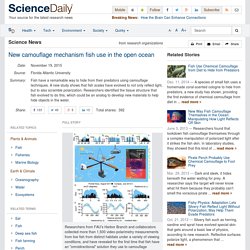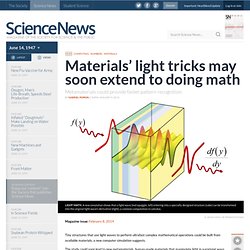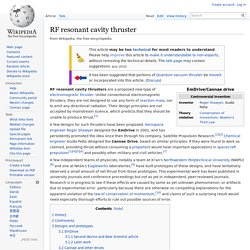

Goodbye, Wi-Fi! Li-Fi Just Got Tested And It's 100 Times Faster! Things are going to get very interesting in the coming months.

The way we access internet can completely change forever. Well, that's what scientists are telling us anyway. Remember this word - 'Li-Fi'; it's going to be used very often soon enough. What is it you ask? Li-Fi is a wireless technology that transmits high-speed (insanely high-speed) data using visible light communication, or VLC. Scientists claim that they are achieving speeds of up to 224 gigabytes per second in the lab using Li-Fi earlier this year.
The technology uses Visible Light Communication (VLC), a medium that uses visible light between 400 and 800 terahertz (THz). Sciencealert.com "We are doing a few pilot projects within different industries where we can utilise the VLC (visible light communication) technology," Deepak Solanki, CEO of Estonian tech company, Velmenni, told IBTimes UK.
There are more positives than just speed. Purelifi.co.uk Watch Haas's TED talk explaining the technology, right here - Dord. Biomagnetism. New camouflage mechanism fish use in the open ocean. The vast open ocean presents an especially challenging environment for its inhabitants since there is nowhere for them to hide.

Yet, nature has found a remarkable way for fish to hide from their predators using camouflage techniques. In a study published in the current issue of Science, researchers from Harbor Branch Oceanographic Institute at Florida Atlantic University and collaborators show that fish scales have evolved to not only reflect light, but to also scramble polarization. They identified the tissue structure that fish evolved to do this, which could be an analog to develop new materials to help hide objects in the water. "We've known that open water fish have silvery scales for skin that reflect light from above so the reflected intensity is comparable to the background intensity when looking up, obliquely at the fish, as a predator would," said Michael Twardowski, Ph.D., research professor at FAU's HBOI and co-author of the study who collaborated with co-author James M.
Materials’ light tricks may soon extend to doing math. Tiny structures that use light waves to perform ultrafast complex mathematical operations could be built from available materials, a new computer simulation suggests.

The study could soon lead to new metamaterials, human-made materials that manipulate light in surprising ways. In previous experiments, scientists have used metamaterials to create invisibility cloaks that bend light waves around objects (SN 8/27/11, p. 16). Nader Engheta, an electrical engineer at the University of Pennsylvania in Philadelphia, took metamaterials in a new direction in 2012, when he and colleagues made circuit elements that process light waves the way resistors and capacitors process electric currents.
Such elements could be far smaller and faster than current electrical circuit parts. In the new study, Engheta and colleagues designed materials to use light to do more sophisticated calculations, mathematical operations familiar to anyone who has studied calculus. Tod Grubbs of Bee Creek Photography, A. RF resonant cavity thruster (Wikipedia) RF resonant cavity thrusters are a proposed new type of electromagnetic thruster.

Unlike conventional electromagnetic thrusters, they are not designed to use any form of reaction mass, nor to emit any directional radiation. Their design principles are not accepted by mainstream science, which predicts that they should be unable to produce thrust.[1] A few designs for such thrusters have been proposed. Aerospace engineer Roger Shawyer designed the EmDrive in 2001, and has persistently promoted the idea since then through his company, Satellite Propulsion Research.[2][3] Chemical engineer Guido Fetta designed the Cannae Drive, based on similar principles.
If they were found to work as claimed, providing thrust without consuming a propellant would have important applications in spacecraft propulsion[1][4][5][6] and possibly other military and civil vehicles.[7] History[edit] Searching for low-propellant space drives has been a goal of space exploration for much of this time. EmDrive[edit] X-ray microscope reveals 'Solitons,' a special type of magnetic wave. Researchers used a powerful, custom-built X-ray microscope at the Department of Energy's SLAC National Accelerator Laboratory to directly observe the magnetic version of a soliton, a type of wave that can travel without resistance.

Scientists are exploring whether such magnetic waves can be used to carry and store information in a new, more efficient form of computer memory that requires less energy and generates less heat. Magnetic solitons are remarkably stable and hold their shape and strength as they travel across a magnetic material, just as tsunamis maintain their strength and form while traversing the ocean. This offers an advantage over materials used in modern electronics, which require more energy to move data due to resistance, which causes them to heat up.
"Magnetism has been used for navigation for thousands of years and more recently to build generators, motors and data storage devices," said co-author Hendrik Ohldag, a scientist at SSRL.